#duchess of shrewsbury
Explore tagged Tumblr posts
Text
Shrewsbury was a man who put off getting married for literal decades and when he finally did get married, it wasn't to a rich young heiress, he chose a Catholic Italian widow with no money no future no prospects and, some even said, no looks (they were unbelievably mean to my dear Nothing Girl), a woman whom he knew that nobody back home would approve of. he married her being fully aware of EVERYTHING he was walking into.
so for people to seriously think he wasn't in love with her is actually fucking embarrassing
16 notes
·
View notes
Text

James Hamilton Wylie, "Lady Philippa" in History of England Under Henry the Fourth, Volume 2
#philippa of england#joan of navarre#philippa de mohun duchess of york#historian: james hamilton wylie#the battle of shrewsbury#thinking about this always
1 note
·
View note
Note
What were the symbols of Margaret of Anjou, Elizabeth Wydeville and Elizabeth of York? Do we know why they chose them?
Hi!
Margaret of Anjou used the marguerite daisy, which was white tipped in red. We see it in the Talbot-Shrewsbury book and the ‘Book of the Skinners Company’ in 1475. This flower seems to have been a common symbol/emblem for women named Margaret in England: iirc, Margaret Holland Duchess of Clarence and her granddaughter Margaret Beaufort were also represented by it at times.
Elizabeth Woodville used a deep red gillyflower or clove pink. These were strongly associated with Virgin Mary's iconography; this specific shade symbolized virtuous love, betrothal and marriage; and it was also known as the ‘queen of delights’, giving it distinctly royal associations. Compared to both predecessor and her daughter, Elizabeth’s had no ‘default’ symbol to use, so she evidently got creative.
Elizabeth of York used the white rose of York, one of her father’s most important symbols. This was not just a personal emblem but distinctly dynastic: it emphasized Elizabeth's identity as the Yorkist heiress and contributed to Tudor image politics, in turn symbolized by their now-iconic red-and-white rose.
Hope this helps! If anyone wants to add anything, feel free <3
69 notes
·
View notes
Photo

“The Queen sat crowned ‘in her estate’ at the high table flanked by the sceptre bearers, kneeling. The Archbishop of Canterbury sat on the Queen’s right, the Duchess of Suffolk and Lady Margaret of York on her left. Kneeling on the Queen’s left were the young Countess of Shrewsbury and the Countess of Kent, who held a veil before the Queen when she ate. Elizabeth herself removed her crown while eating and replaced it when she had finished.“ - Elizabeth: England’s Slandered Queen by Arlene Okerlund.
This is a sketch I did quite late last night. It is part of the series of illustrations that I want to make for my artist book, which I will put together with the character design of the characters, huehue.
I need luck to finish such a project. My ambition will kill me.
#the wars of the roses#15th century#historical#middle ages#british history#character design#edward iv#elizabeth woodville#elizabeth of york#henry vii#isabel neville#richard iii#artists on tumblr#illustration#digital art#sketch#my art#the white queen#the white princess#coronation#banquet#plantagenets#house of york#royals
110 notes
·
View notes
Text
Yorkist Birthdays 🤍
5 june - Edmund of Langley , fourth son of Edward iii.
2nd October - King Richard iii
11th June - Queen Anne nevile
28th April - King Edward iv
11th February - Elizabeth of york
2nd November - Edward v and Anne of York
17th August - Richard of Shrewsbury, duke of york
21st October - George duke of Clarence
5th September - Isabell nevile
25th February - Edward 17th earl of Warwick
14th August - Margaret countess of Salisbury and Catherine of york .
3rd May - Cecily nevile, duchess of york and Margaret of york, duchess of burgundy.
21st September - Richard 3rd duke of york
22nd November - Richard nevile , 16th earl of Warwick
3rd February - Elizabeth Woodville.
Lancastrian Birthdays ❤️
6 March - John of Gaunt
31st May - Margaret Beaufort
28 January - King Henry vii
April - King Henry iv
6 December - King Henry vi
23 March - Margaret of Anjou
16 September - King Henry V
13 October - Edward of Westminster
2 notes
·
View notes
Text
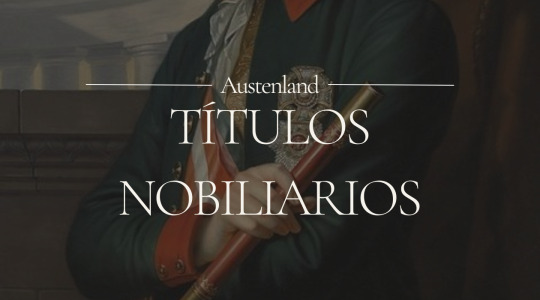
Nota: Los títulos nobiliarios son rsrvabls tant pr prsonaj como por familia; esto es, Lady X, una jovencita londinense de noble abolengo, podrá reservar el Ducado de Norfolk para su familia, sea para un NPC o un familiar que luego pondrá en búsqueda. Así mismo, para evitar confusiones, cada título tiene un apellido familiar adjudicado.
Títulos no libres a reserva (históricamente conferidos a los príncipes):
Duque y Duquesa de York (Duke and Duchess of York). Este título a menudo se otorga al segundo hijo del monarca.
Duque y Duquesa de Cornwall (Duke and Duchess of Cornwall). Reservado por tradición al Príncipe de Gales, el primer hijo del monarca.
Duque y Duquesa de Edinburgh (Duke and Duchess of Edinburgh). Históricamente otorgado a hijos menores del monarca, en nuestro caso al tercero.
Títulos libres a reserva:
Duque y Duquesa de Sussex (Duke and Duchess of Sussex). Familia: Mountbatten.
Duque y Duquesa de Norfolk (Duke and Duchess of Norfolk). Familia: Howard
Duque y Duquesa de Bedford (Duke and Duchess of Bedford). Familia: Russell
Duque y Duquesa de Devonshire (Duke and Duchess of Devonshire). Familia: Cavendish.
Duque y Duquesa de Northumberland (Duke and Duchess of Northumberland). Familia: Percy.
Duque y Duquesa de Dorset (Duke and Duchess of Dorset). Familia: Sackville.
Duque y Duquesa de Wellington (Duke and Duchess of Wellington). Familia: Wellesley.
Duque y Duquesa de Marlborough (Duke and Duchess of Marlborough). Familia: Churchill.
Duque de Rothesay (Escocia*)
Duque de Hamilton (Escocia*)
Duque de Buccleuch y Queensberry (Escocia*)
Duque de Argyll (Escocia*)
Duque de Atholl (Escocia*)
Duque de Montrose (Escocia*)
Duque de Roxburghe (Escocia*)
Marqués y Marquesa de Bath (Marquess and Marchioness of Bath). Familia: Thynn.
Marqués y Marquesa de Winchester (Marquess and Marchioness of Winchester). Familia: Paulet.
Marqués y Marquesa de Lansdowne (Marquess and Marchioness of Lansdowne). Familia: Petty-FitzMaurice.
Marqués y Marquesa de Salisbury (Marquess and Marchioness of Salisbury). Familia: Cecil.
Marqués y Marquesa de Northampton (Marquess and Marchioness of Northampton). Familia: Compton.
Conde y Condesa de Derby (Earl and Countess of Derby). Familia: Stanley.
Conde y Condesa de Essex (Earl and Countess of Essex). Familia: Devereux.
Conde y Condesa de Warwick (Earl and Countess of Warwick). Familia: Greville.
Conde y Condesa de Shrewsbury (Earl and Countess of Shrewsbury). Familia: Talbot.
Conde y Condesa de Carlisle (Earl and Countess of Carlisle). Familia: Howard.
Vizconde y Vizcondesa de Falkland (Viscount and Viscountess of Falkland). Familia: Cary.
Vizconde y Vizcondesa de Hereford (Viscount and Viscountess of Hereford). Familia: Devereux.
Vizconde y Vizcondesa de Gage (Viscount and Viscountess of Gage). Familia: Gage.
Vizconde y Vizcondesa de Melville (Viscount and Viscountess of Melville). Familia: Dundas.
Vizconde y Vizcondesa de Bridport (Viscount and Viscountess of Bridport). Familia: Hood.
Barón y Baronesa de Berkeley (Baron and Baroness of Berkeley). Familia: Berkeley.
Barón y Baronesa de Montagu (Baron and Baroness of Montagu). Familia: Montagu.
Barón y Baronesa de Byron (Baron and Baroness of Byron). Familia: Byron.
Barón y Baronesa de Leighton (Baron and Baroness of Leighton). Familia: Leighton.
Barón y Baronesa de Lovelace (Baron and Baroness of Lovelace). Familia: King.
7 notes
·
View notes
Text
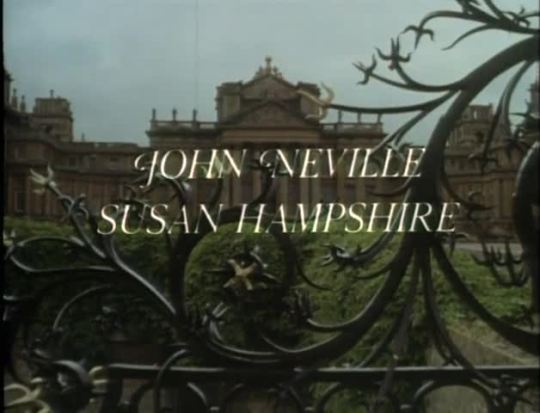

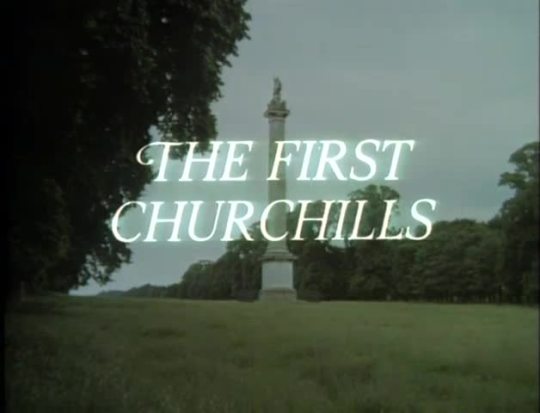
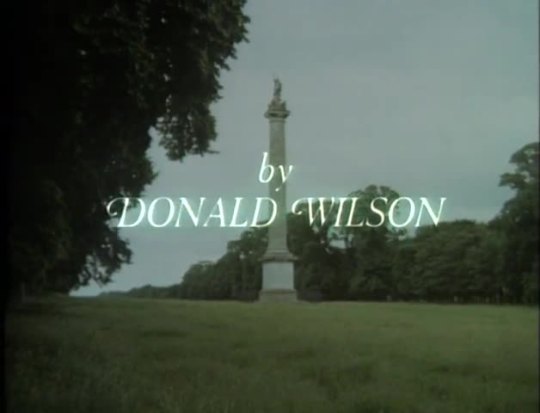










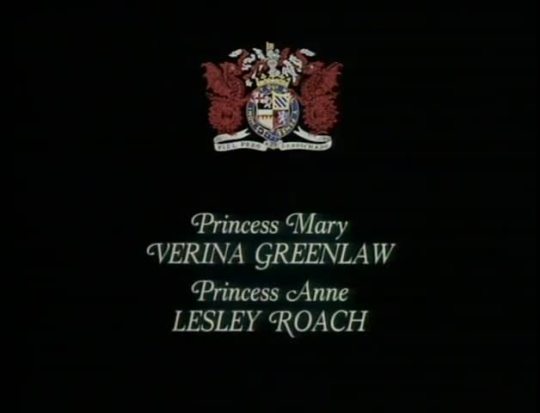


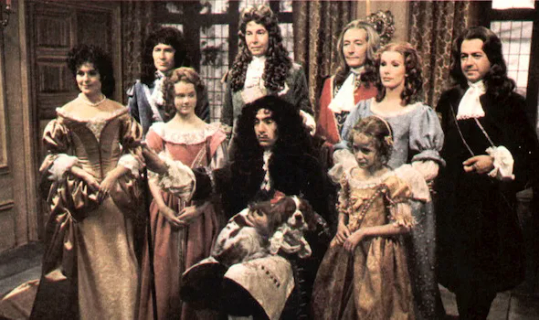
The First Churchills - BBC Two - Septembr 27, 1969 - December 13, 1969
Period Drama (12 Episodes)
Running Time: 60 minutes
Stars:
Susan Hampshire as Sarah Jennings Churchill, Duchess of Marlborough
John Neville as John Churchill, 1st Duke of Marlborough
James Villiers as King Charles II
John Westbrook as King James II
Sheila Gish as Queen Mary, wife to James II
Alan Rowe as King William III
Lisa Daniely as Queen Mary II
Margaret Tyzack as Queen Anne
Roger Mutton as Prince George of Denmark
Robert Robinson as King Louis XIV
John Standing as Sidney Godolphin
Frederick Peisley as Lord Shaftesbury
Job Stewart as Lord Shrewsbury
James Kerry as James, Duke of Monmouth
Richard Pearson as Robert Harley
Moira Redmond as Barbara, Duchess of Cleveland
Richard Warwick as Francis Godolphin
Polly Adams as Henrietta Churchill
Graham Armitage as John Wilmot, Earl of Rochester
Colin Bean as Lord Russell
Consuela Chapman as Duchess of Portsmouth
Michael Culver as Charles Churchill
Andria Lawrence as Nell Gwyn
Michael Lynch as D'Artagnan:
Kay Patrick as Henrietta Wentworth
Arthur Pentelow as Marquess of Carmarthen
Bruce Purchase as Duke of Buckingham
John Ringham as Laurence Hyde, 1st Earl of Rochester
Nicholas Smith as Titus Oates
Michael Attwell as Henry St John
Jill Balcon as Abigail Masham
Freddie Wilson as James Stuart, the Old Pretender
Yvonne Antrobus as Anne Churchill
Robert Mill as Charles Spencer, 3rd Earl of Sunderland
William Job as Adam de Cardonnel
Bernard Taylor as William Cadogan
Francis Wallis as John Churchill, Marquess of Blandford
The First Churchills was the first series telecast by PBS under the title of Masterpiece Theatre from January 10, 1971 - March 28, 1971
#The First Churchills#TV#BBC Two#PBS#Period Drama#1970's#Susan Hampshire#John Neville#James Villiers#John Standing
8 notes
·
View notes
Note
When Henry VII became king and made his wife legalized again, did Elizabeth inherit her father's lands and estates (Did Yorkshire belonged to Edward IV)? Or Henry VII inherited the land and property because it belonged to the previous king and Henry VII was the next king. Thank you!
Hi! Henry VII received the entirety of the crown lands, the estates that had passed into the crown's hands because of past attainders, and the lands that had been integrated into the crown by 1485 such as the Duchy of Lancaster. The lands belonging to the Duke of York — which included the lands belonging to the Earldom of March — had not been integrated into the crown by that time (they were supposed to go to Edward IV's second son Richard of Shrewsbury). During Henry VII's first parliament, Elizabeth of York was declared Duchess of York so that those lands could formally come into her possession.
However, it's important to know that the lands belonging to the Duke of York did not correspond to Yorkshire! Most of them were in the south and in the Welsh Marches. It explains why initially the north of England was staunchly Lancastrian, a fact that Henry VII acknowledged as soon as he won the crown, citing 'the great dangers, perils, losses of goods, and lives, that the ancestors of the inhabitants of that country [north] have borne and suffered for the quarrel and title of the most famous prince, and of blessed memory, King Henry, our uncle.'
17 notes
·
View notes
Note
Weird asks: 1, 26, 33
1: who is/are your comfort character(s)?
Currently it's always Diego and Lila, but I'm also rewatching Due South at the moment, and I still adore Fraser and Vecchio, they absolutely haven't lost their charm in the (oh god) 30 years since I first watched the show.
(30 years??!!?!?! HOW???)
26: a scenario that you’ve replayed multiple times?
lol - do you mean: every fic I've ever written? Okay, at the moment, my bedtime story for myself is a Due South plot adapted for Diego and Lila, with Diego the ex-boxer and single dad, struggling to make ends meet, takes on a side-hustle throwing himself in front of cars for an insurance scam, is rescued by The Most Unlikely Mountie Of All Time (Lila's mother is some kind of Canadian ambassadorial whatever). She helps him get home, a few blocks from where she lives, and meets his adorable little girl, tells the girl that she's a Mountie, Diego is like, thanks for the help but don't help me again and stop lying to my kid. Kid goes in search of Lila bc she hears from her teacher that Mounties help people, and asks her to help her dad...and that's as far as I've got. XD
33: the last adventure you’ve been on?
Ooh...well, I think actually that was one you sent me on, with the National Trust ticket offer! As well as Greys Court, we went to Cliveden last week, which is a magnificent stately home, now a fancy hotel, a gift from the 2nd Duke of Buckingham to his mistress, the Duchess of Shrewsbury. Some gift! The grounds are gorgeous, we walked through the woods for a mile and a half before we got anywhere near the house, found a tortoise fountain, endless stairs, had lunch by the river (in the pouring rain), witnessed a proposal (aww) (with accompanying photographer - it's that kind of place), and had tea in the conservatory. There was a magnificent display of gourds, and a fountain of love, and a looooong walk back to the car.
Thank you!!!
5 notes
·
View notes
Text
chatsworth house
chatsworth house is an iconic house where many people often visit, it is full of amazing interiors and history. The house holds major collections that include paintings, furniture, old master drawings, neoclassical sculptures and books. The garden receives approximately 300,000 visitors per year, the gardens are vast and one could spend an entire day just admiring them as their are about 20 full time gardeners.

Chatsworth House build in 1687 home to Elizabeth Talbot, Countess of Shrewsbury although better known as Bess of Hardwick
Chatsworth has appeared in a number of films and television shows and documentaries such as Pride and Prejudice, The duchess, The wolf man and certain scenes in BBC gangster series pesky blinders are just some examples.

Keira Knightley in pride and prejudice 2005
The history of Chatsworth House is very well known it all started in the 16th century with Elizabeth Talbot Countess of Shrewsbury better known as Bess of Hardwick who grew to become the second most powerful woman in Elizabethan England after the Queen. She married four times, Sir William Cavendish was her second husband, when he married Bess in 1547 she persuaded him to sell the former monastic lands he had amassed and move to her home country. They bought the chatsworth manor for £600 in 1549 and began to build the first house on site in 1552 , the hunting tower, built in 1580s still stands on the hill above chatsworth. After Sir William died in 1557 Beth remarried 2 more times. Queen Elizabeth appointed Shrewsbury as custodian of Mary queen of Scot’s who was a prisoner in chatsworth at various times between 1569 and 1584. Her lodgings were on the east side of the house where the rooms although changed beyond recognition we still called the Queen of Scots apartments. Bess also built Hardwick hall a surviving masterpiece one of the greatest houses of Elizabethan age.

Elizabeth Countess of Shrewsbury
In the 17th Century, William Cavendish was the second and favourite son of Bess of Hardwick, and became her heir in her death in 1608 he inherited a fast fortune of several important properties, Although chatsworth was inherited by her eldest son Henry its contents were left to William. He managed his estates carefully and purchased more land and also invested in various overseas trading companies. William married Anne Keighley and they had three sons and one daughter, after Anne’s death he had one further son with his second wife. He died on 3rd march 1626.
By the 1680s Chatsworth had fallen into poor repair state and the 4th Earle began some much needed work in the old house. The new Chatsworth was finished just before the duke died in 1707.

Portrait of William Cavendish
In the 18th century, Lancelot 'Capability' Brown landscaped the estate and the 5th Duke married Lady Georgiana Spencer.
William Cavendish 2nd Duke of Devonshire (1673-1729)
The 2nd Duke made no changes to the house and garden that his father had created at Chatsworth. He was however a connoisseur of the arts, and was responsible for the formation of an outstanding collection which included paintings, Old Master drawings and prints, ancient coins and carved Greek and Roman gems.
William Cavendish, 4th Duke of Devonshire (1720-1764)
At Chatsworth the 4th Duke made great changes to the park and garden. Having decided that the house should be approached from the west, he pulled down the old stables and offices which interrupted with the view on this side, and razed the cottages of Edensor village which were visible from the house. The architect James Paine (c.1716-1789) was commissioned to build new stables, and he also designed a new bridge upstream of the house. Land to the west of the river, including what remained of Edensor village, was enclosed to become the park as it is today. Lancelot (Capability) Brown (1716-1783) was commissioned to replace the 1st Duke's formal garden and park with the natural, romantic look which he had helped bring into fashion.

Portrait of William Cavendish 2nd Duke of Devonshire
Harvard referencing:
www.chatsworth.org. (n.d.). 16th century. [online] Available at: https://www.chatsworth.org/visit-chatsworth/chatsworth-estate/history-of-chatsworth/16th-century/ [Accessed 29 May 2023].
www.chatsworth.org. (n.d.). 17th century. [online] Available at: https://www.chatsworth.org/visit-chatsworth/chatsworth-estate/history-of-chatsworth/17th-century/ [Accessed 29 May 2023].
www.chatsworth.org. (n.d.). 18th century. [online] Available at: https://www.chatsworth.org/visit-chatsworth/chatsworth-estate/history-of-chatsworth/18th-century/ [Accessed 29 May 2023].
2 notes
·
View notes
Text
i don't want to dwell so much on the uhhh present happenings, but coincidentally i was looking thru what's labeled as 'the elections' portion of the duchess of marlborough's correspondence, where i found a letter addressed to her by mary, countess cowper. not so long ago, actually, just october 23rd....1710 :3
in it lady cowper briefly mentions adelhida talbot, the duke of shrewsbury's wife! she was known to be very outspoken and bold and flirty, to the point she annoyed even sarah. some additional context to this is the fact that she was also a fine entertainer in her own home and adored parties and companyyyy (・ω<)☆
this is what lady cowper has to say:
Your description of the Duchess of Shrewsbury is very good. I have heard much such an account of her, only with this addition. My Lord Duke looking a little grave, she chucked him several times under the chin, bidding him look up amongst all the company. She is a great honour to a court.
when i tell you this woman had a STRANGLEHOLD on her husband (ノ*°▽°*) !!!
#duke of shrewsbury#adelhida talbot#duchess of shrewsbury#sarah churchill#duchess of marlborough#they r in straight yuri love....#written with both paws
7 notes
·
View notes
Note
same Margaret anon as before! The question is completely different so I figured sending it in the same ask would be very random.
Margaret's personal symbol was the marguerite, right? Do we know what colour it was? I remember reading it was white somewhere but I can't find the source anywhere now
Yes we do! We have two surviving depictions of the marguerite Margaret used, the first of which is in the Talbot-Shrewsbury Book that was made to commemorate Margaret's marriage to Henry VI. Throughout the manuscript are many depictions of the marguerite daisy which is depicted as white tipped with red. For instance:
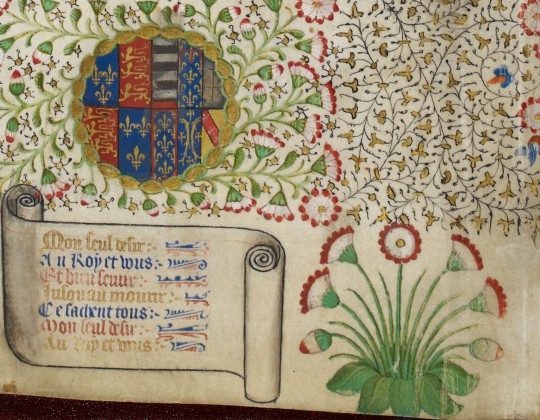
Another depiction comes the Books of the Skinners Company, from when she was entered into the Fraternity of Our Lady in 1475, and the backdrop is decorated with white marguerites:
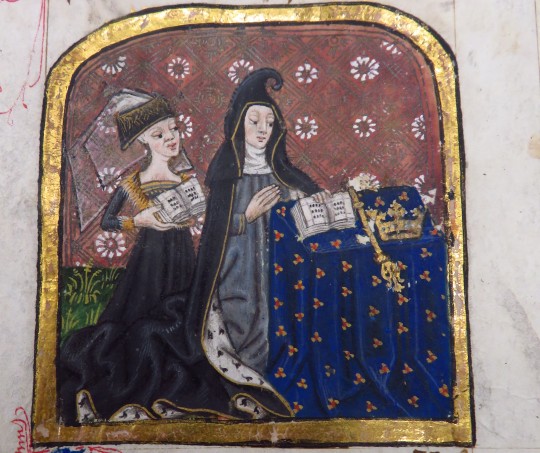
They're obviously more stylised than the ones depicted in the Talbot-Shrewsbury book - the petals don't seem to be dipped in red either. Another surviving example of the marguerite daisy as used as an emblem - though not for Margaret of Anjou but for Margaret Holland, Duchess of Clarence - is found on the ceiling of the Warrior's Chapel at Canterbury Cathedral where a white marguerite daisy, for Margaret, is paired with a red rose (I defer all matters of the red rose is meant to symbolise to @richmond-rex since it seems not to have been a badge or emblem used by the Lancastrian kings.)
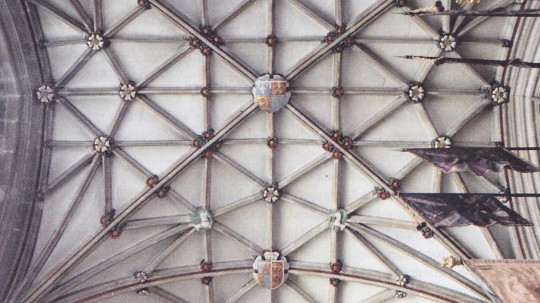
11 notes
·
View notes
Text
" Now that all of [Cecily Neville’s] children were married she also had an increasingly large family of grandchildren. In the 1470s the grandchild whose fortunes probably concerned her most closely was the king’s second son, Richard, who was born at Shrewsbury in August 1473 and created duke of York less than a year later. The will that Edward IV drew up in 1475 indicates, as mentioned above, that Edward intended to establish this new Richard duke of York with lands previously held by his namesake, many of which were currently in Cecily’s possession. The young duke would not come into his lands until he was sixteen and there was no suggestion that Cecily would be expected to part with her properties if she was still alive at this point. Nonetheless, from now on she must have been conscious that she was holding lands that should one day be his. In the event, young Richard was presumed dead by the time of Cecily’s own death and it was her great grandson, Henry duke of York (the future Henry VIII), who acquired those of her lands that were not granted to his mother, the queen. The fact that Cecily made a more generous bequest to Henry in 1495 than that to his older brother, Arthur, suggests that she still consciously identified herself more closely with the boys who shared her husband’s title.”
-J.L. Laynesmith, "Cecily Duchess of York"
#Cecily Neville Duchess of York#Henry VIII#princes in the tower#15th century#english history#my post#queue
3 notes
·
View notes
Text
Dame Clara Butt - God shall wipe away all tears from The Light of the World (Sullivan)
(Recorded: London 1915)
Sullivan began the composition of The Light of the World at the end of September, 1872 and it would occupy him for many months. In a letter to his friend, J. W. Davison, dated 16 May 1873 Sullivan makes clear the unusually long time (for him) that he spent on its composition. He wrote:
I never go out in the world as my Oratorio takes all my time and thought...I have stuck to my work since last Michaelmas without faltering. The 1st part is done & is in rehearsal and the second is rapidly progressing. The words are all compiled from the Bible by Grove & myself. I think the book is really beautiful thanks to dear old 'G'.
During the rehearsal period, Sullivan made several visits to Birmingham, where the work was to receive its first performance at the Festival of 1873. He soon became a popular figure with the choristers. As one, William Poutney, later recalled:
I well remember the rehearsals of this work. The composer came several times to try over the choruses, and his firm but gentle manner soon made him a favourite with the choristers, who seemed to vie with each other in the desire to make the oratorio a success.
As the time of the first performance approached, the betrothal of Alfred, Duke of Edinburgh, to the Grand Duchess Marie, daughter of Tsar Alexander II was announced. Sullivan numbered the Duke amongst his friends and immediately sought and received permission to dedicate the Oratorio to his future wife.
The first performance took place at the Birmingham Festival on 27 August 1873 in the presence of the Duke of Edinburgh with Tietjens, Trebelli, Sims Reeves and Santley as the principal soloists. It had been confidently expected that the work would be a masterpiece that would rival Handel's Messiah and Mendelssohn's Elijah in popularity. Indeed, the first performance was a triumph and the President of the Festival, the Earl of Shrewsbury, publicly congratulated the composer at the end of the performance.
Sullivan used to say that when the lull in the cheering came and he heard Lord Shrewsbuy's voice calling out 'Mr. Sullivan' a sudden dread came upon him lest the religious prejudices of the noble President should have been wounded by the treatment of the libretto, and that he was going to hear a protest. He was soon relieved, however, and Lord Shrewsbury's eulogy was warmly supported by the audience. The press were equally enthusiastic. The critic of The Standard wrote: And The Observer of 31 August 1873 commented: The Duke declared the work to be "a triumph" and Gounod, who heard the work at a later performance in London called it "a masterpiece." After its premiere in Birmingham, performances followed in other towns and cities: Bootle on 5 January 1874, Nottingham on 21 January 1874 and Manchester on 19 February 1874. The music lovers of Manchester, perhaps realising that Sullivan would derive little pecuniary reward for the months he had laboured over the score, arranged a complimentary dinner at which Sullivan was presented with a 'handsome silver cup and a considerable sum of money'. Sullivan also derived income from the sale of scores. According to the contract with Cramer for the publication of the vocal score, dated 4 September 1873, Sullivan was paid £300 in respect of all rights, with further payments of £100 when sales reached 2,000 and again when the 4,000 mark was reached. But this was considerably less than the income he would derive from one of the Savoy operas, so it is perhaps unsurprising that it would be some years before he would compose another large scale choral work. By 1899, when he came to write an assessment of Sullivan as a composer, Benjamin Findon could no longer put it in quite the same class as the greatest oratorios:
To maintain the peculiar quality of sacred music throughout a long and diffuse text restrains within too narrow a limit a gift which leans so closely to the dramatic as Sullivan's; but again we are constrained to admire the wonderful art of the part writing and the beauty of the orchestral accompaniments. A fine illustration of his accomplishment in the direction of concerted vocal music is the imposing chorus, "I will pour out my spirit," while his more delicate method is well instanced by the grateful children's chorus, "Hosanna to the Son of David"; and his exquisite handling of four and five part harmony is adequately shown in the unaccompanied quartet and quintet. A somewhat singular feature in connection with this work is that it presents Jesus in the first person, and an inner orchestra is provided especially to accompany the utterances of the Saviour, which throughout are particularly solemn in character. "The Light of the World" may not take rank with the highest examples of oratorio art, but its undoubted merits entitle it to an honoured and intimate companionship with its more favoured brethren. It is a member of the same family, it has the noble traits of a great inheritance; but it is of the younger branch and once removed from the direct line of succession. Its production gave an additional cachet to the composer's fame, and its musicianly qualities will certainly not lessen his reputation in the eyes of the student of the future.
#classical music#opera#music history#bel canto#composer#classical composer#aria#classical studies#maestro#chest voice#Dame Clara Butt#Clara Butt#dramatic contralto#contralto#The Light of the World#oratorio#Arthur Sullivan#God shall wipe away all tears#classical musician#classical musicians#classical history#history of music#historian of music#musician#musicians#diva#prima donna
0 notes
Text

Anne de Mowbray, 8th Countess of Norfolk, later Duchess of York and Duchess of Norfolk (10 December 1472 – c. 19 November 1481) was the child bride of Richard of Shrewsbury, Duke of York, one of the Princes in the Tower. She died at the age of eight.
1 note
·
View note
Text
Chatsworth house
The Beginning

16
century
The history of Chatsworth begins with Elizabeth Talbot, Countess of Shrewsbury, also known as Bess of Hardwick. Who grew up in Derbyshire from a modest background , she grew to become the second most powerful woman in Elizabethan England after the Queen. Elizabeth Talbot married four times, and it was with her second husband, Sir William Cavendish, that the Cavendish line which was established. The Duke and Duchess of Devonshire live at Chatsworth House now. As it has been passed down through sixteen generations of the Cavendish family in North Derbyshire, England.

0 notes